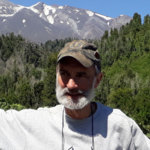Interviewer: Samuel Schmieding
Interview Date: November 15, 2013
Location: Swanson residence, Corvallis, Oregon
Duration: 1:58:08
Fred Swanson spent his career as a Forest Service earth scientist studying the geology-ecology interface mainly in the Andrews Forest and, also, serving in leadership positions, including as Principal Investigator of the Long-Term Ecological Research (LTER) project. Swanson gives an extended description of his upbringing in Delaware and Virginia and then undergraduate work at Penn State, a year of work for US Geological Survey on the West coast, followed by a PhD in Geology at University of Oregon. Throughout this history he was exposed to the natural world via family travels, academic field experiences, and in other ways which encouraged a love of the wild natural world, especially in the West, and a deep appreciation of taking an interdisciplinary approach to engagement with the natural world – both geological and ecological.
In this interview, the second in a three-part series, Swanson begins with a discussion of Andrews Forest and Mount St. Helens as great Zen masters, that is, teachers who gave lessons to scientists and how some of those lessons rippled out into arguments for changes in land management and policy. After an extended description of his engagements with Mount St. Helens, Swanson describes his work with Andrews Forest through the IBP program and then LTER beginning with preparation of the first LTER proposal from Andrews, and how his research focused on geology, geomorphology, fire history, and other physical dimensions of forest and stream ecosystems. The conversation returns to what it was like working in IBP and LTER; operating at the interface of National Science Foundation, the Forest Service, and the university; and participating in inter-LTER-site collaborations, such as with David Foster and Harvard Forest.
Dublin Core
Title
Description
In this interview, the second in a three-part series, Swanson begins with a discussion of Andrews Forest and Mount St. Helens as great Zen masters, that is, teachers who gave lessons to scientists and how some of those lessons rippled out into arguments for changes in land management and policy. After an extended description of his engagements with Mount St. Helens, Swanson describes his work with Andrews Forest through the IBP program and then LTER beginning with preparation of the first LTER proposal from Andrews, and how his research focused on geology, geomorphology, fire history, and other physical dimensions of forest and stream ecosystems. The conversation returns to what it was like working in IBP and LTER; operating at the interface of National Science Foundation, the Forest Service, and the university; and participating in inter-LTER-site collaborations, such as with David Foster and Harvard Forest.

